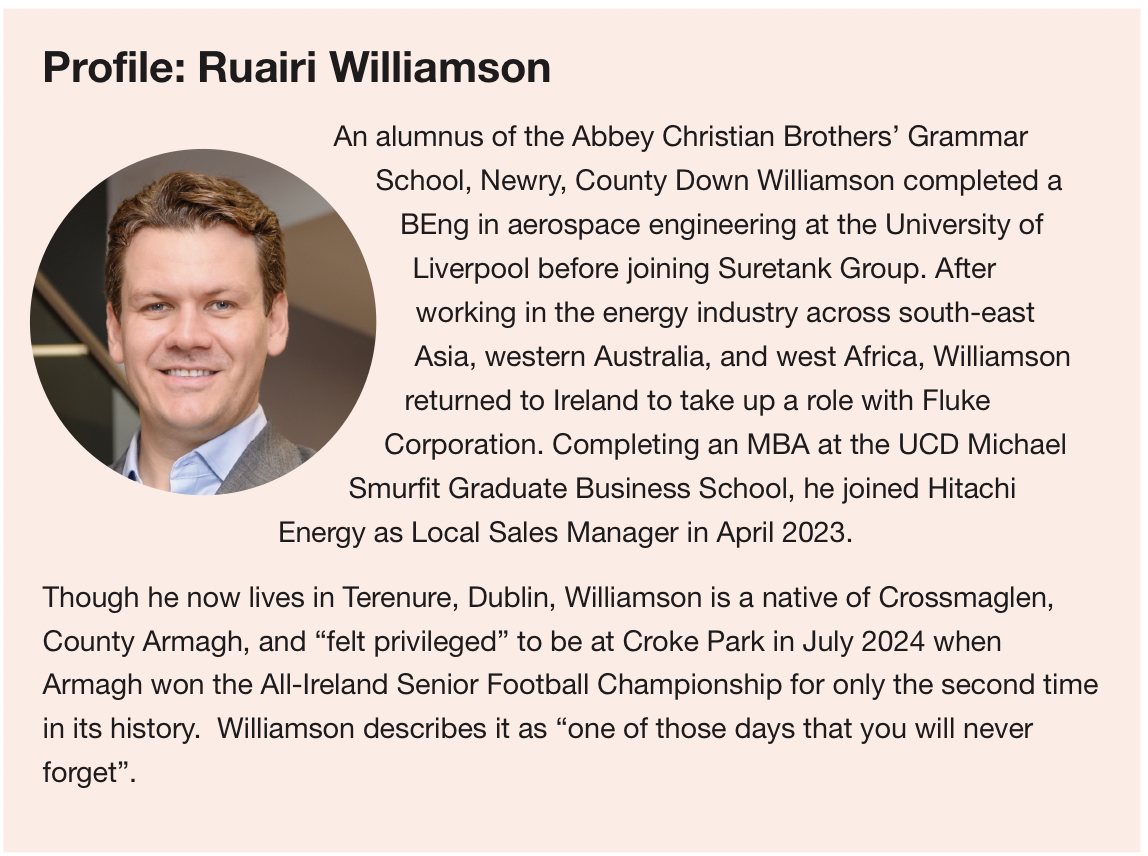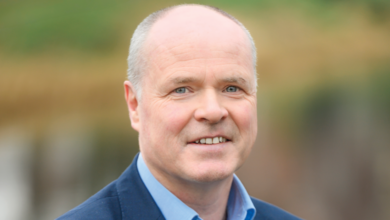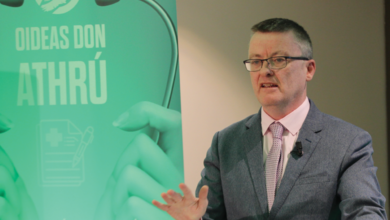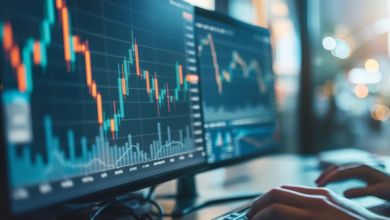Accelerating the energy transition
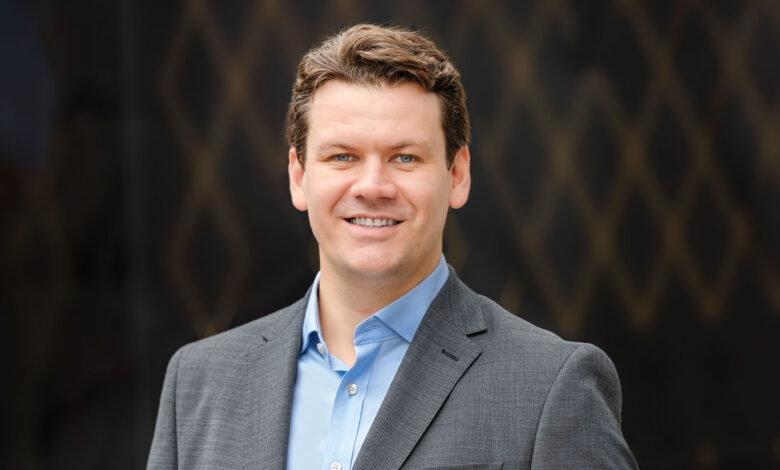
As Ireland sits on the cusp of its energy future, eolas Magazine visits Hitachi Energy Ireland’s Dublin city centre office and sits down with Local Sales Manager Ruairi Williamson, to discuss how it supports customers to accelerate the energy transition and the critical role of digital innovation.
Reflecting on the last 12 months – his first-year leading sales for Hitachi Energy’s Irish operation – Williamson recalls “the many successes we have achieved from an organisational perspective”.
“Most significantly, Hitachi Energy was awarded an eight-year contract to provide service solutions for the East West Interconnector (EWIC), a high voltage direct current (HVDC) link which runs for 260km between Ireland and Wales,” he observes.
“Having provided services solutions since EWIC entered operation in 2013, EnCompass, our new service solution, prioritises customers’ sustainability and ensures ongoing support for the 500MW HVDC link over its lifetime.”
Energy system in transition
Commenting on the fact that Ireland’s energy system is “undergoing a digital transformation”, Williamson asserts that the sector’s consensus is that this transformation must now be consolidated.
In order to integrate significant volumes of renewable electricity onto the grid, he argues, it is essential to “explore increased HVDC transmission and DC-DC solutions”.
Successful grid transformation which delivers the necessary grid flexibility “hinges on digitalisation”.
Ruairi Williamson, Local Sales Manager, Hitachi Energy Ireland
Leading by example, in August 2024, Germany’s four transmission system operators – 50Hertz, Amprion, TenneT, and TransnetBW – launched a partnership with Siemens Energy, GE Vernova, and Hitachi Energy to transform the HVDC grid via the development of multiterminal hubs with DC circuit breakers to link new extra HVDC connections. This project is intended to demonstrate the technical feasibility and economic sustainability of multiterminal technology.
Offshore wind
While Ireland has made huge progress in offshore wind, it is not without its challenges. Lack of grid capacity and the variable and decentralised nature of renewables necessitates new infrastructure, smart solutions, and innovative components. This is central to meeting Ireland’s offshore wind targets, Williamson says.
In September 2022, the Joint Statement on the North Seas Energy Cooperation (NSEC) committed Ireland to a target of 20GW by 2040 and at least 37GW of offshore wind by 2050. This ambition was reiterated in the Policy Statement on the Framework for Phase Two Offshore Wind, the draft of which was published in January 2024.
“There are ongoing capacity constraints in relation to the grid. If we want to achieve a total of at least 37GW of offshore renewable energy by 2050, business as usual will not work,” Williamson asserts.
“However, state agencies such as the Maritime Area Regulatory Authority (MARA) alongside policy frameworks and roadmaps such as the National Marine Planning Framework (NMPF), Powering Prosperity, Irelands Offshore Wind Industrial Strategy, and the Future Framework for Offshore Renewable Energy will hopefully accelerate Ireland’s offshore wind energy programme.”
Innovation
Grid operators therefore face new challenges – fluctuations in intermittency, frequency, balancing, and inertia – all of which require innovative solutions.
“Given the variable and decentralised nature of renewables, such as wind generation and solar PV, increasing renewable energy penetration onto the grid necessitates new infrastructure, smart solutions, and innovative components,” Williamson suggests.
“Hitachi Energy’s smart grid solutions manage fluctuating energy generation, while innovative grid components, including sensors, ensure operational flexibility for more agile and efficient decision-making.”
Successful grid transformation which delivers the necessary grid flexibility, Williamson argues, “hinges on digitalisation”.
“Grid distribution challenges cannot be solved without better operational technology being deployed,” he says.
High-voltage equipment
Elaborating on Hitachi’s pursuit of accelerated decarbonisation and enhanced efficiency across the energy system, Williamson references recent eco-efficient innovations in high-voltage equipment to deliver a more sustainable grid while driving down harmful greenhouse gases.
“Take, for instance, F-gases – the most potent greenhouse gases – which account for a total of 2.5 per cent of greenhouse gas emissions across the EU. Now, the EU’s new F-gas regulation aims to save 40 Mt CO2eq by 2030,” he begins.
“There are alternatives to F-gases in new electrical transmission equipment – or switchgear. Sulphur hexafluoride, more commonly known as SF6 is one of the most potent greenhouses gases and is set to be phased out by 2031.
At Hitachi Energy we have developed a portfolio of SF6-free switchgear which is a significant lead forward in high-voltage innovation. “EconiQ is Hitachi Energy’s compelling portfolio of SF6-free switchgear that enables long-distance transmission of massive volumes of electricity while eliminating the use SF6, ultimately adding considerable value for grid operators,” Williamson explains, adding: “The EconiQ portfolio demonstrates the scalability of Hitachi Energy’s pioneering technologies, which are fundamental to accelerating the energy transition through digitalisation.”
DC multi-terminal hubs
DC multi-terminal hubs – which hinge on DC switchgear with DC circuit breakers – enable the efficient distribution of large volume of offshore wind. DC switchgear directly connects DC lines to channel energy flexibly. Including the breakers as part of the switchgear is an innovative approach.
Referencing Hitachi Energy’s HVDC legacy, Williamson is keen to support the expansion of multiterminal HVDC systems as well as introducing new technologies like Hitachi Energy’s hybrid HVDC breaker that will define DC grids of the future.
“Hitachi Energy has led on the delivery of commercial HVDC technology for nearly seven decades and has delivered over half of the world’s HVDC projects.
“Now, in a world first – and unique to Europe – multiterminal hubs will establish extra-high voltage DC power grids to improve the use of DC lines while simultaneously supporting the existing AC grid which will remain the spine of energy transmission. It is a concept that is set to significantly contribute to the delivery of a net zero grid,” he explains.
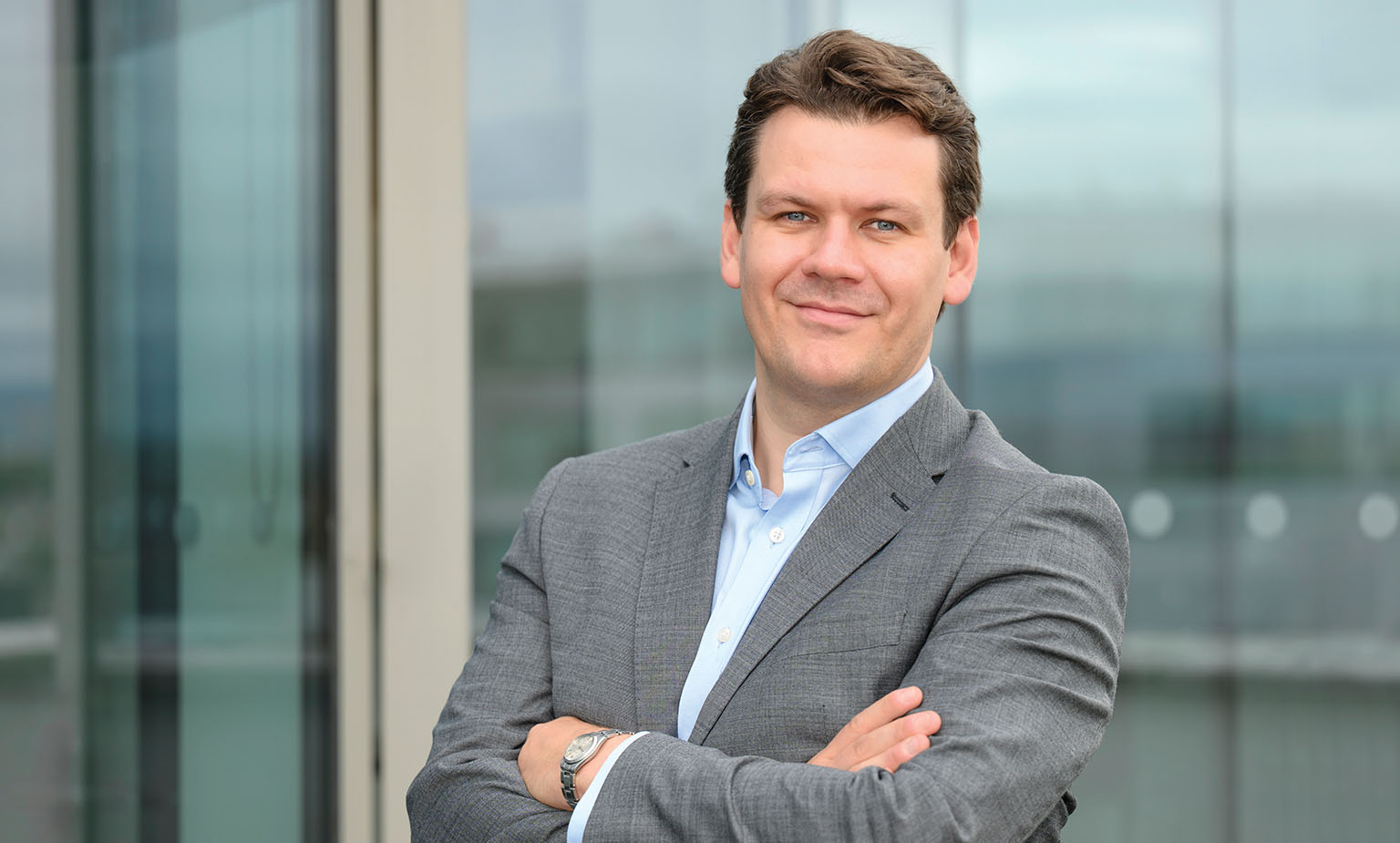
Artificial intelligence
Suggesting that artificial intelligence (AI) holds exciting potential both from an IT perspective, and specifically for Hitachi Energy, from an operational technology perspective, Williamson outlines recent partnerships with other technology giants.
In 2023, Hitachi Energy and Google Cloud agreed a strategic collaboration to develop cloud software products and services to support the global energy transition. Already launched, Velocity Suite Power Prices support efficient decision-making around investment by developers and operators of renewable generation and battery energy storage systems, alongside other energy sector stakeholders.
Further collaboration is set to develop new and innovative solution for utilities and renewable energy producers by using Hitachi Energy’s Energy Portfolio Management and Google Cloud’s data analytics, scalable infrastructure, AI, and machine learning,
“Informing the transformation of the grid, and at the core of the energy transition are data and analytics,” Williamson insists, adding: “Globally, Hitachi Energy’s customers expect solutions that help accelerate the delivery of sustainability goals. Through its partnership with Google Cloud, Hitachi Energy is ensuring that its customers can digitalise to unlock agile decision-making capacity.”
Similarly, Hitachi is also collaborating to combine its domain solutions in operation technology and leadership in the energy sector with NVIDIA’s generative AI expertise to accelerate digital transformation. Announced in March 2024, the collaboration will see the establishment of an AI Centre of Excellence. “We anticipate that this will accelerate social innovation to solve complex societal challenges.
“We are collaborating with another Hitachi Group company, GlobalLogic, based in Athlone, County Westmeath, using their AI expertise and operational technology, to drive insights for customers.”
Transport and industry
Simultaneously, Williamson wants to “win at the edge”, bringing more renewables onto the grid and supporting sectors such as transport and industry on their electrification journeys.
In fact, in 2023 Hitachi Energy was selected by Bus Éireann – Ireland’s national bus company – as its infrastructure partner. The partnership will see Hitachi Energy construct and install the new EV charging infrastructure at the Roxboro bus depot and maintenance facility in County Limerick.
“That is an excellent programme and fantastic opportunity for Hitachi Energy to partner with the National Transport Authority (NTA) and enable Bus Éireann to provide an electric bus fleet for the mid-west region. It is also a project that produced important lessons that we can apply elsewhere as we support more transport customers on their decarbonisation journeys.
“Meanwhile, industry is often overlooked because Ireland has a relatively modest industrial legacy. But the industry that does exist is on the same digital journey as us. With our global footprint, Hitachi Energy Ireland can add value at the beginning of that journey, using lessons from first movers elsewhere to provide insight for Irish organisations experiencing similar challenges.”
Prioritising people
When Williamson last spoke to eolas Magazine in June 2023, Hitachi Energy’s Irish organisation was staffed by 75 people. By August 2024, this increased by 20 per cent to meet growing demand.
“As our single most important asset, our first priority is people,” he affirms, adding: “From a strategic perspective, we anticipate that further skills capacity will be required between now and 2030. We are experiencing strong tailwinds and project a positive macroeconomic outlook for the business,” Williamson remarks.
However, gaps in skills and capacity are a challenge for the electricity industry more generally. Williamson stresses the need to “attract more talent into the industry”. “We need more skills, and more people, and more diversity if we are to accelerate to net zero and meet our 2030 targets,” he insists.
Matching the rhetoric with action, for a second consecutive summer, Hitachi Energy partnered with University College Dublin Lochlann Quinn School of Business to run a summer internship programme for four students.
“In the current context, talent recruitment and retention are extremely competitive and much of the skills required must be sourced from abroad. We must build up an indigenous talent pool.”
Suggesting that higher and further education institutions, industry, and government must coalesce to bridge the skills gap in the energy sector, Williamson reiterates that “decarbonisation will not be delivered without the workforce”.
Safety excellence
After people, health and safety “are our very clearly defined corporate licence to operate”, Williamson explains. He adds that this focus is informed by training, risk management, and accountability.
“We have an excellent culture of safety. In 2023, Hitachi Energy reached 10 years without experiencing a lost-time incident. That is a testament to a strong safety culture within the business – it is not something we simply include in a presentation slide; it is the lived experience of our people,” Williamson asserts.
This is underpinned, he explains, by a ‘speak up’ culture, when a risk or an integrity challenge emerges, “staff are empowered to identify and call attention to it”.
Global presence
Williamson reemphasises Hitachi Energy’s global presence. With a footprint in 140 countries, the global company provides services and technologies to customers across a variety of sectors – including utilities, industry, transport, data centres, and infrastructure.
All of this work is underpinned by enhancing access to electricity while unlocking efficiency across the energy value chain, he says.
“As a global technology leader, Hitachi Energy is accelerating the energy transition so that it is safe, reliable and secure to deliver a sustainable future for all.”
“Hitachi Energy has significant organisational experience and corporate memory of the energy transition. We can draw on our experience in countries which have been first movers in the energy transition. We have had some significant successes in Germany, the Netherlands, and most recently, in France. We want to take those innovative frameworks and bring them to Ireland,” he says.
“We are seeking to standardise as much as possible, helping to resolve market challenges. For instance, given the increased demand across the industry, pre-engineering can shorten lead times for the delivery of equipment and ensure that customers can meet their key deadlines.”
Vision
There is, Williamson notes, an extricable alignment between sustainability and technological innovation placing Hitachi Energy at the heart of the energy transition and the digital transformation needed in the future system.
Dedicated to innovative future technologies and advancing a more sustainable energy system, Hitachi Energy has an important role in accelerating the energy transition through digitalisation.
Technology holds the key to accelerating the energy transition across the world and Hitachi Energy stands ready to jump-start this revolution. “As a global technology leader, Hitachi Energy is driving the sustainable energy future for people and plant. We want to work with our customers at the beginning of their decarbonisation journey. We want to be a planning partner, applying our global experience to their planning processes, to reduce project lead times,” Ireland’s Sales Manager concludes.
